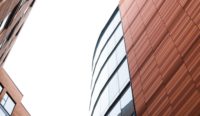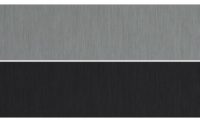Repurposing Cladding

The Bulgari Shanghai store. Photo courtesy of MVRDV

The West in NYC. Photo courtesy of Concrete.

Kristian Augusts gate 13. Photo courtesy of Steni.



One of the basic tenets of sustainable design and construction is a commitment to recycling materials and adaptive reuse. This is now moving toward becoming a common practice, especially in LEED® projects in North America—but not quickly enough.
The ongoing battle to stave off global warming is causing architects and real estate developers to take closer look at the building industry’s impact on the environment and to accelerate the use of sustainable tools and materials.
The cause for concern is fully warranted: nearly 40 percent of energy-related CO2 emissions and 36 percent of energy consumption around the world come from building and construction, according to a 2021 report from the United Nations Environment Program and the International Energy Agency (IEA).
When the construction industry thinks of recycling, perhaps the first thing that comes to mind is steel and other reusable metals—mostly used as structural materials. But the fact is, the façade industry features many building materials that can be recycled and reused, many of which can take on an entirely new and different life in their second chapter.
Modern NYC Condo is Skinned in Bricks Made From Recycled Toilets, Roof Tiles and Steel
In New York City, a modern grey-brick building with a gritty, almost worn-out façade sits at the corner of 47th Street and Eleventh Avenue. The top half is made of glass, and without that the building would look like it’s been there for decades. And that’s because the bricks aren’t new.
The brick facade of The West, a 219-residence condo building comprises almost 580,000 pounds of demolition and industrial waste. Developed by Holland-based StoneCycling, the recycled bricks contain 60 percent waste, including ceramic toilet bowls, roof tiles and steel. Most bricks are composed of two to three waste streams; the company works with 60 waste streams overall.
The West was designed by Concrete, the Dutch architecture firm behind Citizen M hotels in New York, London, and Amsterdam. This project was the firm’s first time working with StoneCycling’s “WasteBasedBricks”—and the first time the bricks have been used in the U.S.—but the architects are drawing on a strong legacy of Dutch brick building.
Italian Shanghai Flagship Store Celebrates a Beloved Chinese Stone with Recycled Glass
In Shanghai, architecture studio MVRDV took recycled materials to a new extreme, along with cues from art deco architecture when they designed the jade-colored facade of the Bulgari Shanghai store. A façade made up of recycled champagne and beer bottles—primarily jade-colored glass—wraps Bulgari Shanghai, which is located at the Shanghai Plaza 66 shopping center—one of the city’s most thriving shopping areas.
For this store, the façade pattern is solid with no windows, which enabled the architects to achieve an art deco pattern more easily. When visualizing the façade design, MVRDV was influenced by the color and materiality of jade, which has historically been celebrated as one of China's most precious stones.
Modest Building Becomes a Beacon of Sustainable Design
When the real estate company Entra bought Kristian Augusts gate 13, a modest office building on the park of Tullinløkka in Oslo, Norway, it’s unlikely anyone envisioned it would ever be an emblem of the circular construction industry of the future. In fact, it was a debate whether the building should remain standing or be demolished.
Entra and Mad architects set ambitious goals. Could the office building be renovated according to circular principles, by reusing materials and building parts? Eventually, the international coworking giant Spaces came in as a tenant and partner, and Scenario Interiørarkitekter and several other partners came onboard to see the project through.
And in the end, they collectively proved that large construction projects can also be designed and developed using circular principles, reuse, and recycling. For Kristian Augusts gate 13, 35-year-old Steni Colour façade panels from a housing association building in Trondheim were repurposed to give it a new lease on life.
“This is a trailblazing recycling project, where a large share of the materials used in the renovation stem from ordering errors in other projects, renovations of other buildings, or from other parts of the building itself,” explains the architect responsible for the renovation, Noora Khezri from Norwegian company Mad Arkitekter. The Kristian Augusts gate 13 was recently presented with the prestigious DOGA (foundation for Design and Architecture in Norway) award for its future-oriented focus on recycling and circular principles.
From the DOGA jury: “The result is a building with a unique identity and intrinsic value, where craftsmanship and architecture go hand-in-hand with excellent project management and interdisciplinary cooperation. The project demonstrates that recycling is not only possible, but also financially viable—profitable, even.”
The recycled materials used in the renovation of the building include concrete floor slabs from the government building R4, grille panels from the Tøyenbadet swimming center and, in particular, Steni façade panels. At first glance these façade panels, with their familiar colors and modern expression, look brand new—but they actually come from a 35-year-old housing association building in Trondheim, and Steni cut and adapted them to match the dimensions needed for the Kristian Augusts project. In all, Steni delivered 3,819 repurposed panels for the project.
For designers and building envelope consultants worldwide, sustainable construction is already a given. And adaptive reuse and recycling of materials from a former life have become an important part of bringing the best materials of the past into the future of façade construction.
Looking for a reprint of this article?
From high-res PDFs to custom plaques, order your copy today!








